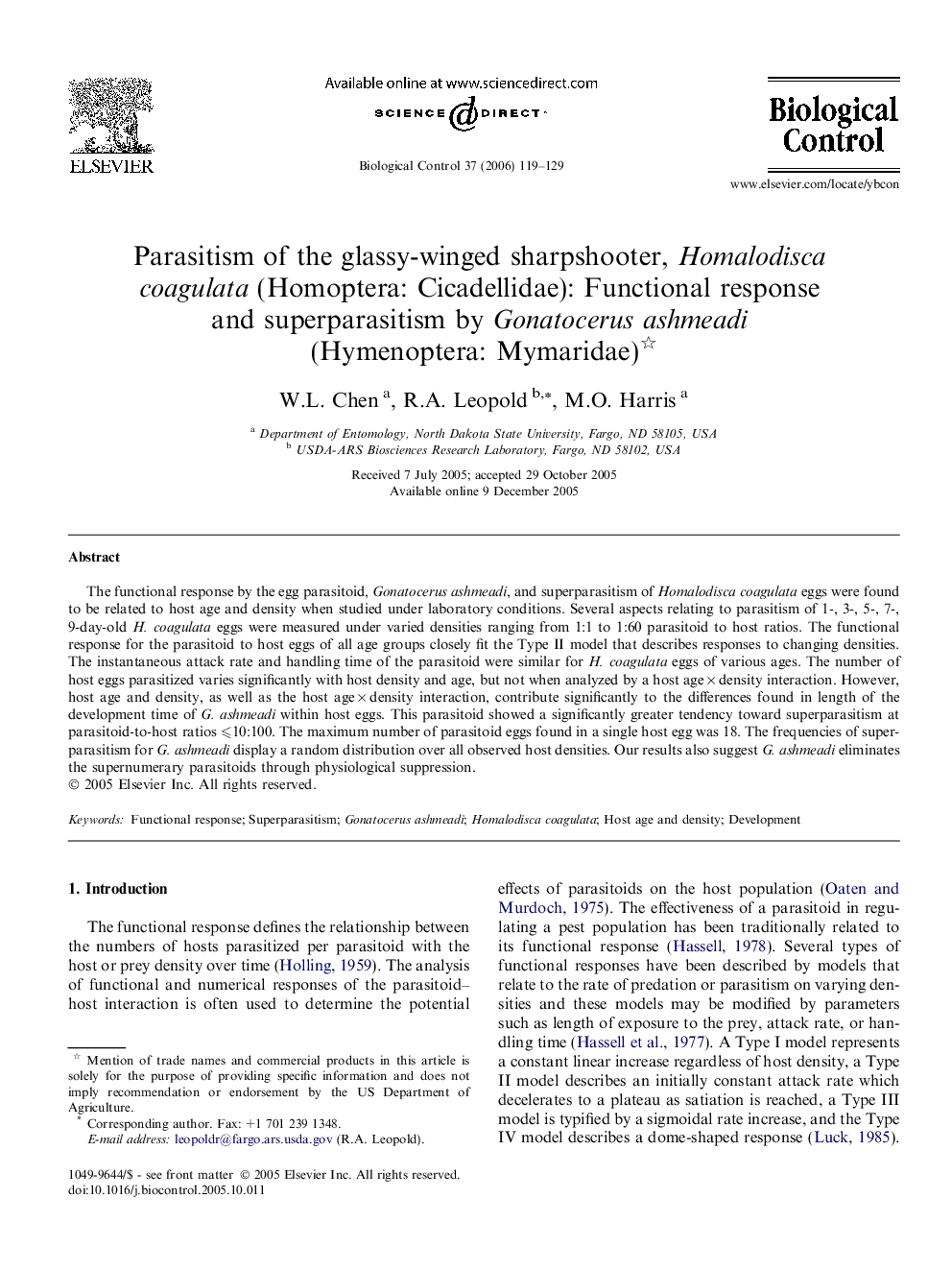| Article ID | Journal | Published Year | Pages | File Type |
|---|---|---|---|---|
| 4505443 | Biological Control | 2006 | 11 Pages |
Abstract
The functional response by the egg parasitoid, Gonatocerus ashmeadi, and superparasitism of Homalodisca coagulata eggs were found to be related to host age and density when studied under laboratory conditions. Several aspects relating to parasitism of 1-, 3-, 5-, 7-, 9-day-old H. coagulata eggs were measured under varied densities ranging from 1:1 to 1:60 parasitoid to host ratios. The functional response for the parasitoid to host eggs of all age groups closely fit the Type II model that describes responses to changing densities. The instantaneous attack rate and handling time of the parasitoid were similar for H. coagulata eggs of various ages. The number of host eggs parasitized varies significantly with host density and age, but not when analyzed by a host age Ã density interaction. However, host age and density, as well as the host age Ã density interaction, contribute significantly to the differences found in length of the development time of G. ashmeadi within host eggs. This parasitoid showed a significantly greater tendency toward superparasitism at parasitoid-to-host ratios ⩽10:100. The maximum number of parasitoid eggs found in a single host egg was 18. The frequencies of superparasitism for G. ashmeadi display a random distribution over all observed host densities. Our results also suggest G. ashmeadi eliminates the supernumerary parasitoids through physiological suppression.
Related Topics
Life Sciences
Agricultural and Biological Sciences
Agronomy and Crop Science
Authors
W.L. Chen, R.A. Leopold, M.O. Harris,
